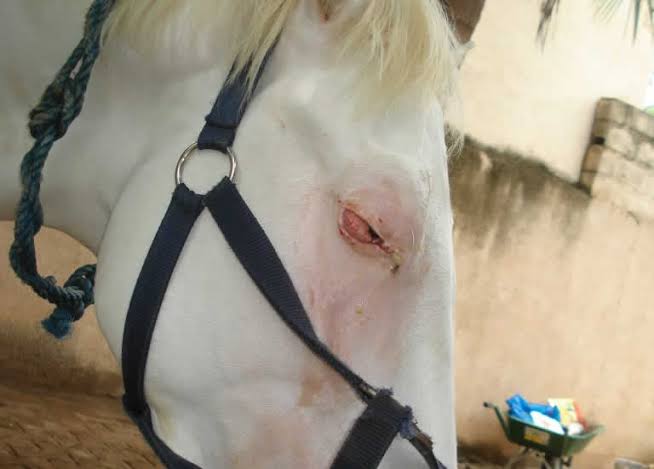
Tumors and Cancer in Horses: Types, Symptoms, Causes, and Treatment Explained
Tumors and cancer can occur in horses, just like in humans and other animals. As horse owners and enthusiasts, it’s important to be aware of the various types of tumors and cancers that can affect horses. Each type has its signs and symptoms, and the treatment options available depend on the type, location, and stage of the tumor or cancer.
Mohit Paliwal is a passionate stud farm owner and dedicated horse enthusiast. His love for horses extends beyond the boundaries of his farm, as he actively shares his extensive knowledge and experiences through informative and engaging vlogs through his YouTube channel. If you’re seeking valuable insights on equine care, training techniques, or simply want to explore the world of horses, Mohit’s YouTube Channel is an indispensable resource. Subscribe to his channel to get updates of his latest vlogs.
Here’s some information about tumor and cancer types, signs and symptoms, and treatment in horses:
Melanoma

Melanoma is the most common type of cancer seen in horses, particularly gray horses. Melanomas typically appear as dark skin lumps or nodules around the tail, anus, and sheath areas.
Symptoms of Melanoma in Horses
The symptoms may include:
- Small, Firm Lumps: Initially, melanomas may appear as small, round, and well-defined bumps beneath the skin.
- Enlarged or irregular masses: Over time, melanomas can grow larger, forming irregular masses or clusters of nodules.
- Discoloration or Ulceration: In some cases, melanomas may change in color or develop areas of ulceration, leading to bleeding or discharge.
- Mobility and Pain: Melanomas located in certain areas, such as the rectum or anus, can cause discomfort, leading to tail swishing, difficulty defecating, or general irritability.
Causes and Risk Factors of Melanoma in Horses
The precise causes of melanoma in horses are not fully understood. However, these factors could play a significant role:
- Genetic Predisposition: Gray horses have a higher likelihood of developing melanomas due to genetic factors. A mutation in the gray coat color gene (STX17) is thought to contribute to this increased risk.
- UV Radiation: Sunlight’s UV radiation is believed to contribute to melanoma development. Extended outdoor exposure increases the risk for horses.
- Environmental Factors: Exposure to certain chemicals or toxins may contribute to melanoma in horses, but the specific substances remain unidentified.
Treatment Options for Equine Melanoma
The treatment of melanoma in horses varies depending on the size, location, and stage of the tumor. Here are some common treatment approaches:
- Surgical Excision: Small, accessible melanomas can be surgically removed. However, this method may not be suitable for larger or deeply rooted tumors.
- Cryotherapy: This technique involves freezing the melanoma cells with liquid nitrogen, causing them to die off. Cryotherapy is commonly used for smaller melanomas or those located in sensitive areas.
- Immunotherapy: Immunostimulant medications can be administered to stimulate the horse’s immune system, helping it recognize and attack melanoma cells.
- Radiation Therapy: In cases where surgical removal is not feasible, radiation therapy may be employed to target and shrink melanomas.
- Chemotherapy: While less common, chemotherapy drugs can be used to slow down the growth of melanoma cells and control tumor progression.
Squamous Cell Carcinoma
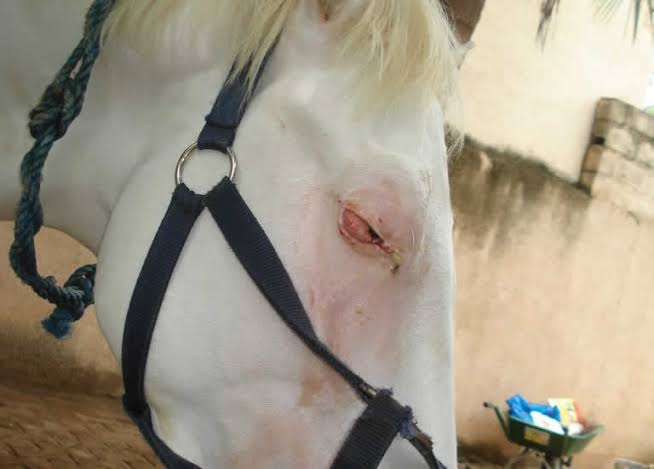
Squamous Cell Carcinoma (SCC) is a prevalent type of cancer that affects the skin and mucous membranes of horses, often occurring in the eyes, eyelids, and genital areas. It can manifest as ulcerative lesions or masses.
Symptoms of Squamous Cell Carcinoma in Horses
Squamous Cell Carcinoma in horses presents with a range of symptoms depending on the affected area. Common signs include:
- Ulcerative Lesions: SCC can cause the development of ulcerative lesions, which are open sores that may appear as raised, crusty, or discolored areas.
- Masses or Tumors: In some cases, SCC can manifest as masses or tumors, which can vary in size, shape, and texture. These growths can be observed in the eyes, eyelids, or genital areas.
- Ocular Discharge: SCC in the eyes may lead to abnormal discharge, such as excessive tearing or mucus-like secretions.
- Swelling or Inflammation: The affected area may exhibit signs of swelling, redness, or inflammation, indicating the presence of SCC.
Causes and Risk Factors of Squamous Cell Carcinoma in Horses
The exact causes of SCC in horses are not fully understood, but several factors contribute to its development:
- UV Radiation: Prolonged exposure to sunlight, particularly ultraviolet (UV) radiation, is considered a significant risk factor for SCC in areas such as the eyelids and other non-pigmented skin regions.
- Genetic Predisposition: Some horse breeds may be genetically predisposed to developing SCC.
- Environmental Factors: Certain environmental factors, such as high levels of dust, irritants, and pollutants, may contribute to the development of SCC.
Treatment Options for Equine Squamous Cell Carcinoma
The treatment of SCC in horses depends on various factors, including the tumor’s location, size, and stage. Common treatment options include:
- Surgical Excision: Surgical removal of the tumor, along with a margin of healthy tissue, is a common approach for localized SCC. However, this may not be suitable for tumors in certain locations, such as the eyes.
- Cryotherapy: Cryotherapy involves freezing the SCC cells using liquid nitrogen, causing them to die off. This method is often employed for smaller or superficial SCC lesions.
- Radiation Therapy: High-energy radiation is used to target and destroy SCC cells. Radiation therapy is particularly effective for SCC in the eyes or other regions where surgical
Lymphoma
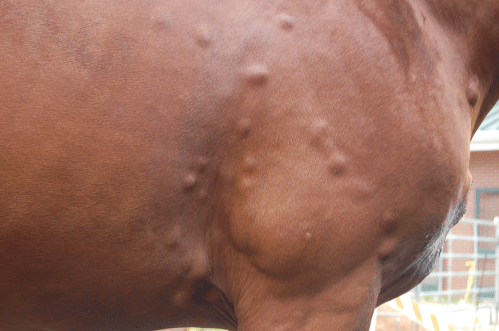
Lymphoma is a type of cancer that can affect horses, targeting their lymphoid tissue and potentially impacting multiple organs.
Symptoms of Lymphoma in Horses
Lymphoma in horses can present with a variety of symptoms, which may vary depending on the organs affected. Common signs include:
- Weight Loss: Unexplained weight loss is a common symptom of equine lymphoma, often indicating systemic involvement.
- Enlarged Lymph Nodes: Lymphoma can cause the lymph nodes to become swollen and firm to the touch. These swollen lymph nodes may be palpable in areas such as the neck, chest, or groin.
- Abnormal Blood Cell Counts: Lymphoma can affect blood cell production, leading to abnormal blood cell counts, such as anemia or changes in white blood cell counts.
- Gastrointestinal Issues: Horses with gastrointestinal lymphoma may experience symptoms such as colic, diarrhea, or decreased appetite.
- Respiratory Distress: In cases where lymphoma affects the lungs or respiratory system, horses may exhibit difficulty breathing or other respiratory abnormalities.
Causes and Risk Factors of Lymphoma in Horses
The exact causes of lymphoma in horses are not yet fully understood. However, several factors are believed to contribute to its development:
- Genetic Predisposition: Certain horse breeds may have a higher susceptibility to developing lymphoma, suggesting a genetic component.
- Environmental Factors: Exposure to environmental toxins, such as pesticides or industrial pollutants, is considered a potential risk factor for equine lymphoma.
- Immune System Dysfunction: Immune system dysregulation or compromise may play a role in the development of lymphoma in horses.
Treatment Options for Equine Lymphoma
The treatment of lymphoma in horses depends on several factors, including the tumor’s location, stage, and the horse’s overall health. Common treatment options include:
- Chemotherapy: Chemotherapy drugs may be administered to kill or slow down the growth of lymphoma cells. This treatment approach can be tailored to the horse’s specific condition and may involve a combination of drugs.
- Immunotherapy: Immunostimulant medications can be used to boost the horse’s immune system, helping it recognize and attack lymphoma cells more effectively.
- Palliative Care: In some cases where the lymphoma is advanced or not responding well to treatment, palliative care may be recommended as a compassionate approach to managing the horse’s symptoms and ensuring their comfort. Palliative care focuses on improving the horse’s quality of life rather than seeking a cure.
Sarcoids
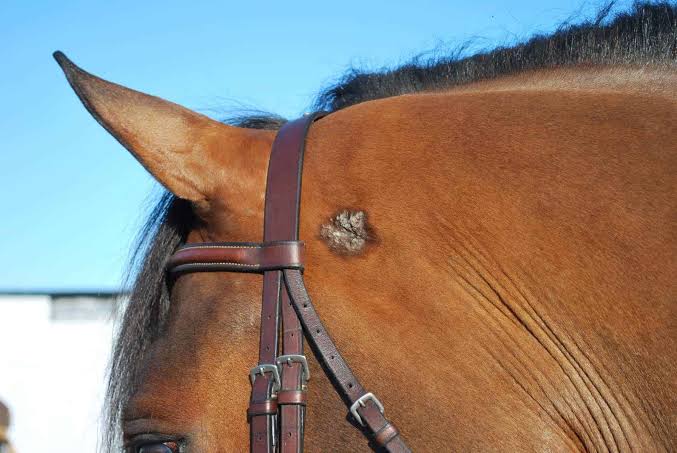
Sarcoids are the most common skin tumors in horses, typically found on the face, neck, and limbs. They can vary in appearance, ranging from flat, scaly lesions to raised masses.
Symptoms of Sarcoids in Horses
Sarcoids in horses can manifest in various ways, with the location and type of lesion determining the specific symptoms. Common signs include:
- Skin Tumors: Sarcoids typically appear as skin tumors that can vary in size, shape, and texture. They are often found on the face, neck, and limbs of horses.
- Flat, Scaly Lesions: Some sarcoids present as flat, scaly patches of skin that may resemble a wound or persistent skin irritation.
- Raised Masses: Other sarcoids may appear as raised masses or nodules, which can be firm or soft to the touch.
- Ulceration or Crusting: In certain cases, sarcoids may become ulcerated or develop a crust on the surface, leading to occasional bleeding or discharge.
- Itching or Irritation: Sarcoids can cause localized itching or discomfort in horses, leading to excessive rubbing or scratching.
Causes and Risk Factors of Sarcoids in Horses
The exact causes of sarcoids in horses remain unclear, but several factors are believed to contribute to their development:
- Bovine Papillomavirus (BPV): Infection with certain strains of BPV is strongly associated with the development of sarcoids in horses.
- Genetic Predisposition: Some horses may have a genetic predisposition to developing sarcoids, indicating a hereditary component.
- Trauma or Skin Damage: Previous skin injuries, wounds, or areas of inflammation may increase the risk of sarcoid formation in horses.
- Fly Bites and Insect Exposure: The bites of flies and other insects have been linked to the development of sarcoids, suggesting an environmental influence.
Treatment Options for Equine Sarcoids
Treating sarcoids in horses can be challenging, and the most suitable approach depends on various factors, including the size, location, and aggressiveness of the tumor. Common treatment options include:
- Surgical Excision: Surgical removal of sarcoids is a common approach for localized tumors. However, the risk of recurrence should be considered, as incomplete removal may lead to regrowth.
- Cryotherapy: Cryosurgery involves freezing the sarcoid tissue with liquid nitrogen, causing cell death. It is often used for small sarcoids or as an adjunct to surgery.
- Laser Ablation: Laser therapy targets and destroys sarcoid cells while minimizing damage to surrounding tissues. It is particularly effective for delicate areas such as the eyes or genitals.
- Topical Medications: Various topical treatments, such as creams or ointments containing cytotoxic agents, can be applied directly to the sarcoid to induce regression.
- Immunotherapy: Immunostimulant therapies, such as Bacillus Calmette-Guerin (BCG) or interferon, can be used to boost the horse’s immune response against sarcoid cells.
- Radiotherapy: Radiation therapy may be employed for large or difficult-to-treat sarcoids, delivering targeted radiation to destroy the tumor cells.
- Watchful Waiting: In some cases, especially for small or non-aggressive sarcoids, a conservative approach of monitoring the lesion’s progression without intervention may be appropriate.
Fibromas

Fibromas are benign tumors that commonly affect horses, particularly in their later years. While generally not life-threatening, fibromas can cause discomfort and potentially impact a horse’s quality of life.
Symptoms of Fibromas in Horses
Common symptoms of fibromas include:
- Skin Abnormalities: Fibromas often manifest as nodules or masses on the skin. These growths can vary in size and texture, and they are typically firm to the touch.
- Mouth Lesions: In some cases, fibromas may develop in the oral cavity, causing issues with eating, bit placement, or general discomfort during riding.
- Behavioral Changes: Horses with fibromas might display signs of irritability or discomfort due to the presence of the tumors.
- Lameness or Stiffness: Fibromas located near joints or tendons can lead to lameness, stiffness, or restricted mobility.
Treatment Options for Fibromas in Horses
Depending on the size and location, given below are some treatment options for fibromas in horses:
- Surgical Removal: If the fibroma is accessible and not in a critical location, surgical excision may be performed under sedation or general anesthesia.
- Laser Ablation: Laser therapy can be an effective alternative to surgery, as it precisely targets and removes fibromas with minimal damage to surrounding tissues.
- Cryotherapy: Liquid nitrogen or other freezing techniques can be used to destroy fibromas, often leading to their regression.
- Watchful Waiting: In some cases, particularly when the fibroma is small and not causing significant discomfort, a “wait and see” approach may be adopted, with regular monitoring to ensure the tumor does not worsen or spread.
Hemangiomas and Hemangiosarcomas
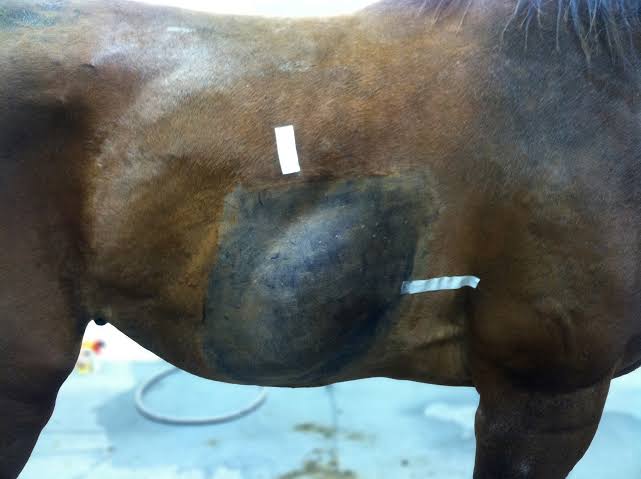
Hemangiomas and hemangiosarcomas are tumors that affect the blood vessels in horses. While hemangiomas are typically benign, hemangiosarcomas are malignant and can pose serious health risks.
Symptoms of Hemangiomas and Hemangiosarcomas in Horses
These symptom are seen in horses with Hemangiomas and Hemangiosarcomas:
- Skin Abnormalities: Hemangiomas and hemangiosarcomas can appear as raised, reddish-purple nodules or masses on the skin. These growths may be small or extensive, depending on the stage and severity of the tumor.
- Internal Bleeding: Hemangiosarcomas, being malignant, have the potential to rupture, leading to internal bleeding. Signs of internal bleeding can include pale gums, weakness, lethargy, and collapse.
- Respiratory Distress: If the tumor affects the airways or lungs, horses may exhibit symptoms such as coughing, difficulty breathing, and wheezing.
- Lameness or Stiffness: Tumors located near joints or tendons can cause lameness, stiffness, or reduced mobility.
Treatment Options for Hemangiomas and Hemangiosarcomas in Horses
Given below are some of the treatment options:
- Surgical Removal: If the tumor is accessible and hasn’t spread extensively, surgical excision may be performed. However, complete removal may not always be possible, especially with hemangiosarcomas.
- Chemotherapy: Hemangiosarcomas may require chemotherapy treatment to help shrink the tumor, slow down its growth, and alleviate symptoms. Chemotherapy can be administered orally, intravenously, or directly into the tumor.
- Palliative Care: In cases where complete removal or aggressive treatment is not feasible, veterinarians may focus on managing symptoms, improving the horse’s comfort, and maintaining a good quality of life.
Early Detection
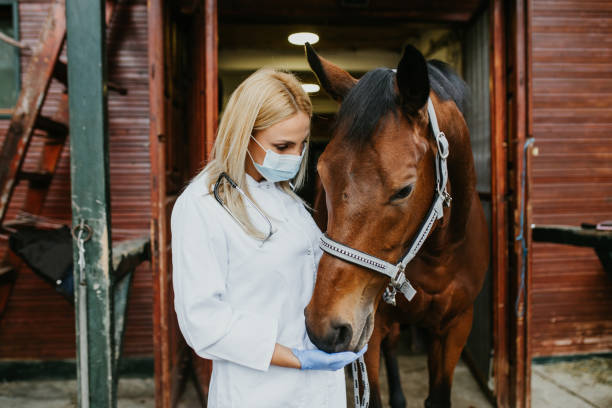
Early detection of tumors and cancer in horses is crucial for timely intervention and improved treatment outcomes. Being proactive and vigilant allows horse owners to identify potential signs of cancer at an early stage, enabling them to seek veterinary care and appropriate diagnostic tests promptly. Early detection plays a significant role in increasing the chances of successful recovery and preventing the cancer from advancing or spreading to other parts of the horse’s body.
Here are some key points highlighting the importance of early detection of tumors and cancer in horses:
- Regular Observation and Physical Examinations: Conducting regular visual inspections and palpations of your horse’s body can help identify any abnormal lumps, bumps, or changes in skin color or texture that may indicate the presence of a tumor.
- Pay Attention to Changes in Behavior and Performance: Changes in appetite, weight loss, decreased performance, or abnormal behavior can be early warning signs of underlying health issues, including cancer.
- Monitor for Abnormal Swellings or Growths: Check your horse’s lymph nodes, limbs, abdomen, and other areas for any unexplained swellings or abnormal growths that may be indicative of a tumor.
- Schedule Routine Veterinary Check-ups: Regular veterinary check-ups provide an opportunity for thorough examinations and early detection of tumors or cancer. Veterinarians are trained to identify subtle signs and can recommend further diagnostic tests if necessary.
- Diagnostic Tests: If a tumor is suspected, diagnostic tests such as ultrasound, biopsy, or bloodwork may be recommended to confirm the presence of cancer and determine its type and stage.
- Early Intervention and Treatment: Early detection of tumors and cancer allows for more effective treatment options, including surgical removal, chemotherapy, radiation therapy, or immunotherapy. Timely intervention can improve the chances of successful treatment and potentially prevent the cancer from spreading.
Practical Strategies to Prevent Cancer and Tumors in Horses

Cancer and tumors can have a significant impact on the health and well-being of horses. While some cases are unpredictable, there are proactive steps that horse owners can take to reduce the risk. A healthy and happy life for your beloved equine partner relies on preventive measures against cancer and tumors. Here are some effective strategies:
Balanced Nutrition
Provide a well-balanced diet consisting of high-quality forage, appropriate concentrates, and essential nutrients. This supports a strong immune system and optimal body condition, minimizing the likelihood of cancer development. Consult an equine nutritionist for a customized diet plan.
Regular Veterinary Check-ups
Schedule routine visits with your equine veterinarian to monitor your horse’s health, undergo thorough examinations, and detect potential risks early on. Timely screenings and diagnostic tests can enable prompt intervention or treatment.
Environmental Management
Creating a safe and low-risk environment for your horse is essential in minimizing exposure to carcinogens and tumor-inducing agents. Implement the following practices:
- Create a safe environment by ensuring clean and well-ventilated stables.
- Maintain clean feed and pastures free from toxic plants, ensuring your horse has access to safe grazing areas.
- Minimize exposure to environmental pollutants such as pesticides, herbicides, and industrial chemicals.
- Protect your horse from excessive sun exposure with shaded areas and equine-friendly sunscreen.
Parasite Control
Implement a regular deworming program recommended by your veterinarian to control internal parasites and practice good pasture management to minimize exposure to external parasites. This reduces the risk of associated cancers like sarcoids.
Exercise and Mental Stimulation
Engage your horse in regular physical activity and mental stimulation, such as varied training routines, turnout time, and social interaction with other horses. Exercise supports a healthy weight, a strong immune system, and optimal cellular function, reducing the risk of cancer and tumors.
Conclusion
Tumors and cancer in horses are significant health concerns that can have a detrimental impact on equine well-being and performance. While some tumors are benign and can be managed with relative ease, others can be aggressive and life-threatening. Early detection, accurate diagnosis, and timely treatment are crucial in improving the prognosis for affected horses. Regular veterinary check-ups, diligent monitoring, and appropriate management practices can aid in the prevention, early intervention, and successful management of tumors and cancer in horses. By staying informed and proactive, horse owners and caretakers can contribute to the overall health and longevity of their equine companions.






